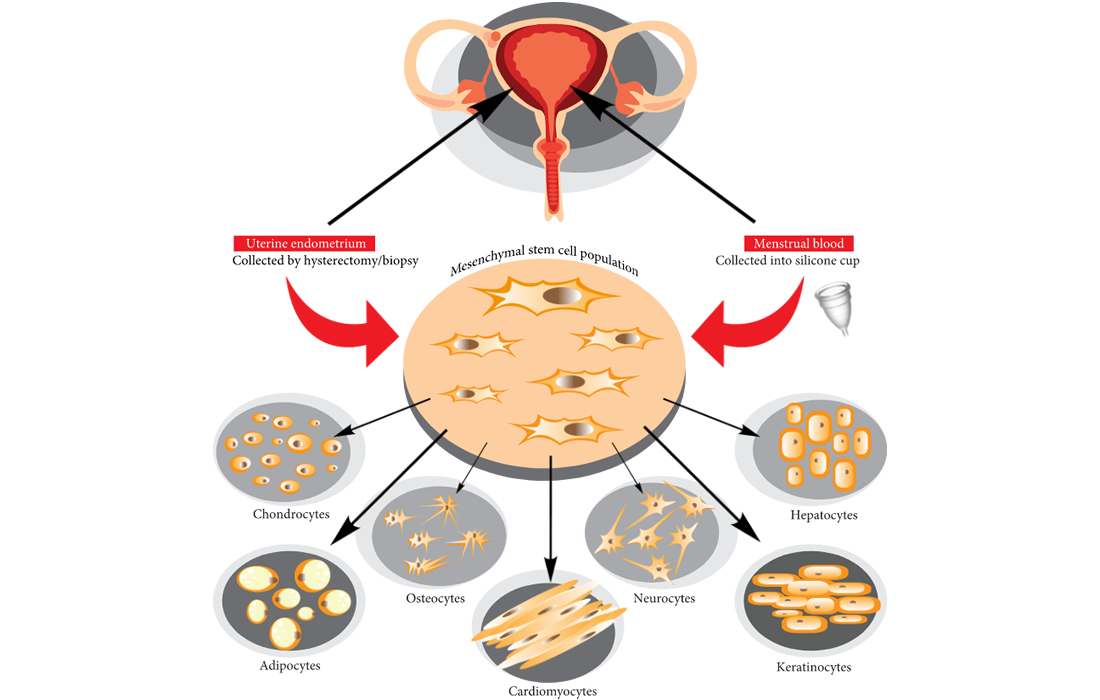Regenerative Medicine News and General Information
Endometrial Stem Cells and Their Potential Clinical Use
The human endometrium is a very dynamic tissue undergoing an extraordinary growth during pregnancy and, in a cyclic manner, during the reproductive life of each woman. They have what is called endometrial stem cells (ESC) that are undifferentiated, auto-renewable cells able to generate daughter cells that could potentially be used as a source of stem cells for clinical practice.
The human endometrium is a dynamic tissue able to regenerate itself about 400 times durings a woman’s reproductive period. Endometrial mesenchymal stem cells were found by researchers in many adult tissues such as bone marrow, umbilical cord, dental pulp, skeletal muscle, fat, pancreas, placenta and endometrium. Moreover, they were found to be implicated in repairing cartilage and bone, being able to differentiate into chondrocytes (cartilage cells) and osteocytes (bone cells).
Endometrial stem cells can be isolated directly from menstrual blood since each month a fraction of endometrial stem cells is lost with menstruation. It has been found that they can differentiate into cardiomyocytes (cardiac cells), respiratory, epithelial, myocytes (muscle cells), endothelial, pancreatic, hepatic, adipose tissue, cartilage, neural cells and bone tissue. Their isolation is very promising because they are abundant in the human endometrium and can be collected in a non-invasive way.
Menstrual stem cells can be isolated directly from menstrual blood and then differentiate in vitro into endometrial cells.
There are multiple trials available of patients being treated using intravenous or intrathecal stem cells in patients affected by multiple sclerosis, muscle repairing in duchenne muscular dystrophy or pancreatic islets reconstitution in a mouse diabetic model. It was also demonstrated an immunomodulatory effect in a mouse model of ulcerative colitis and the ability to restore brain dopaminergic neurons in Parkinson-like murine models.
The endometrium has been evidenced as a tissue with extraordinary regenerative capabilities; however, it needs to be further studied in order to be used as a reliable source of stem cells and to start using them in the treatment of different conditions in which the use of stem cells have shown promising clinical outcomes.
Source:
Flaminia Bardanzellu, et al. 2017. Regenerating the Womb: The Good, Band and Ugly Potential of the Endometrial Stem Cells. Bentham Science Publishers 2017. Current Regenerative Medicine, 2017, Vol. 7, No. 1
Image from: https://static-01.hindawi.com/articles/sci/volume-2018/5748126/figures/5748126.fig.001.svgz

